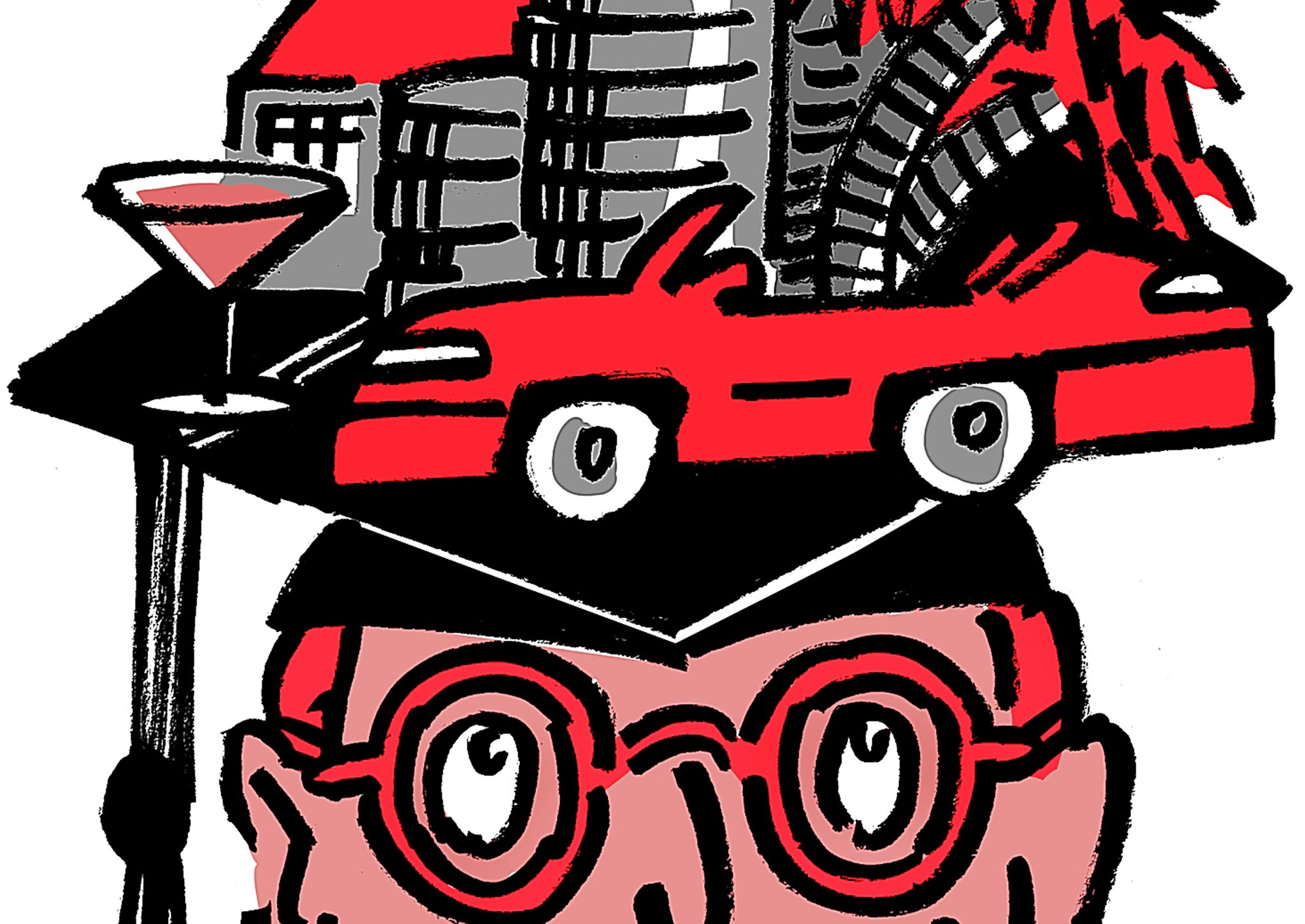True education is for life, not just A-level results day
For many years, A-level results day has been a piece masquerading as a story


My teachers sounded baffled – even aghast. We had just heard Tom Stoppard talk with torrential wit and zest about his play Travesties, with its brilliantly farcical collision between Vladimir Lenin, James Joyce and the Dadaist mischief-maker Tristan Tzara in Zurich during the First World War. “But he didn’t go to university!” they spluttered.
Instead, the Czech refugee had gone directly from school, at 17, to a reporter’s job on the Western Daily Press. Stoppard’s newsroom education breaks out from time to time in his plays: in Rock’n’Roll, for instance, two journalists sent to cover unrest in occupied Prague wonder if they have a genuine story, or merely a picturesque piece.
For many years, A-level results day has been a piece masquerading as a story. As deep shifts in structure and funding reshape the landscape of post-school education, minute statistical blips (A* and A grades “plunged” this year from 26 to 25.9 per cent) enliven quiet Augusts. Meanwhile, rigidly choreographed shots of late-teenage joy and woe finesse an administrative marker into a national ritual. Of course, A-levels do matter. In a country that over the past half-century has expanded its student population from 200,000 to 1.7 million, those strings of letters encode more near-future prospects than ever before. However arbitrary, they have come to symbolise a gateway – or a guillotine – that opens or cuts off the route to adult achievement.
On Thursday alone, universities sealed the deal on 409,000 offers, even without the purgatorial suspense of clearing, or its snooty cousin “adjustment” – when better-than-expected grades allow applicants to raise their bid. On any measure, the advent of a genuine mass market in higher education in this country is a huge historic shift. In 1920, just 5,060 people in the UK obtained degrees of any kind; in 1990, 108,487; in 2011, 545, 070. As the female participation rate outstrips the male, in some affluent postcodes – social geographer Danny Dorling reported earlier this year – “young women who do not go to university by the age of 18 now find themselves in the minority”. Flashback to 1920: in that year, 1,386 women across the entire country gained a degree.
Overall participation in higher education, only 3.4 per cent in 1950, had by the 2000s began to hover well above 40 per cent. By 2014, the number of school-leaver applications had grown enough even to cancel out the dip that arrived in 2011 with the impact of £9,000 yearly fees. Despite the burden of post-graduation debt, even the percentage who win university places from less advantaged backgrounds – such as pupils in receipt of free school meals – has still risen. How odd, future analysts may conclude, to see a policy that ruined an entire party (the Liberal Democrats) leave such a faint trace on the graph of social history.
For so long an elite entitlement or else a marginal pursuit, university has within one generation become the default experience for a near-majority in many areas. “More means worse,” thundered the arch-curmudgeon Kingsley Amis as expansion began with the Robbins Report of 1963. More certainly means different. A tertiary system with a near-50 per cent take-up will have an entirely different function to its ancestor in a 5 per cent world. Donnish complaints about marketisation and monetisation abound, voiced most eloquently by the Cambridge cultural historian Stefan Collini. (See his bracing polemic What Are Universities For?.) For better or worse, we have come a long way from John Henry Newman in 1852, defending the idea of a university to sceptical Irish Catholics as a place where Knowledge (his capital) has “its end in itself”. For Newman, “Its direct business is not to steel the soul against temptation or to console it in affliction, any more than to set the loom in motion, or to direct the steam carriage”.
Today, courses in loom design and steam-carriage engineering (or at least their 21st-century heirs) are very much in vogue. After a bruising spell as professor at Essex University, the writer Marina Warner has denounced the stranglehold of corporate and utilitarian ideology on campuses where “new managers want to pack ’em in and pile ’em high”; students and staff suffer alike, and “faith in the value of a humanist education is beginning to look like an antique romance”.
Last year, however, after a career spent in academic governance, Sir Roderick Floud drew more hopeful lessons. For him, the gains from rapid growth decisively outweigh its deficits. Access has widened, and standards have held. “More has meant better, and even more will mean even better. Kingsley Amis was wrong.”
In a fully certificated society, opportunity should rise. So too will anxiety. In this climate, graduation begins to look less like a passport to social mobility than a ration card for social survival. For many of the 1.7 million, a degree – and the debt mountain it demands – will offer not so much the ticket to a more ample life than their non-graduate parents and grandparents as the chance at least to match the life they had. So it becomes ever-more tempting to treat the August rite as a make-or-break event. Yet for disappointed or doubtful school-leavers, other options remain: deferment; retakes; switches of subject; study abroad. Or they might thrust two defiant fingers up to the crowd, tuck some workplace experience under their belts and choose to study part-time.
If so, take care. Behind the annual results jamboree lies another, less gratifying, picture. Not everyone who enters study does so at 18 or 19. For a long period, mature students have taken up more than a quarter of undergraduate places, although many “matures” are under-thirties who join full-time courses. More than with school-leavers, though, the fee spike seems to have deterred older part-timers who already face heavier outlays. Entrants to part-time undergraduate study fell by 55 per cent between 2010 and 2015. This week’s figures suggest a large rise in mature-student numbers in Scotland, but a slight fall in England – evidence that English fees may now discourage returnees. That great autodidact Sir Tom Stoppard OM might even classify this as a story rather than a piece.
Should fear of fee debt convert this downturn into a permanent term drop in older student numbers, a great tradition will have been betrayed. Ever since 1823, when Dr George Birkbeck and Jeremy Bentham set up the “Mechanics’ Institution” that became Birkbeck College, the urge to fling open college doors has helped to drive progress. Then, exactly 50 years ago in August 1965, arts minister Jennie Lee submitted the report of an advisory committee to PM Harold Wilson. It endorsed the creation of a “University of the Air”, accessible to all who might benefit. By July 1969, the Open University had begun its work. “I didn’t believe that we could get it through if we lowered our standards,” Lee said. She never did. If anything, the OU’s pioneering commitment to high-quality broadcast education – now emulated in online courses by a host of prestige institutions – pushed up teaching quality on the traditional campus.
Since 1969, the OU has taught nearly two million students. From Sheila Hancock to Jerry Hall, Lenny Henry to Joan Armatrading, Romola Garai to Julie Christie, it boasts more than enough celebrity alumni to ensure it seldom lacks for cheerleaders. More importantly, the university came to embody not just the second chance, but a Newman-like ideal of “humanist education”. If you seek a modern image of the sheer joy of discovery, then think of the space scientist Professor Monica Grady, hugging a BBC correspondent amid whoops of ecstasy as the Philae lander began to transmit data from Comet 67P in June. Professor Grady works at the Open University’s trailblazing planetary and space sciences department, which designed a brace of vital instruments on board the Rosetta mission. Those corny OU stereotypes from Educating Rita belong in a very distant galaxy.
Flattered by worldwide imitation, the OU still invites students to approach learning as a lifelong journey rather than a youthful steeplechase. The blessings from that journey may spread much further than an individual career. A couple of years ago, I attended an Open University degree ceremony at the Barbican in London to cheer on that morning’s recipient of an honorary doctorate (my partner, as it happens). It turned out that the other honorary graduand on the podium with her was Bobby Cummines OBE FRSA. At 16, Cummines had the dodgy distinction of being Britain’s youngest armed robber. He served 13 years in prison for violent offences. Inside, he discovered the OU as a crucial cornerstone of rehabilitation, and since his release has – beyond a distinguished career with housing and ex-offender charities – always championed its role.
Even Cardinal Newman might agree that Cummines represents the value of a university education pretty well. Whatever happens at school-leaving stage, the door to study must always stay open to students like him (and, of course, to people with less colourful CVs). So good luck to this week’s leaping teens – and even more to those left feeling earthbound by their grades. In the longer term, the great escapes pulled off by Bobby Cummines and his ilk – and the educators who aid and abet them – should have us jumping just as high with joy.
Join our commenting forum
Join thought-provoking conversations, follow other Independent readers and see their replies
Comments